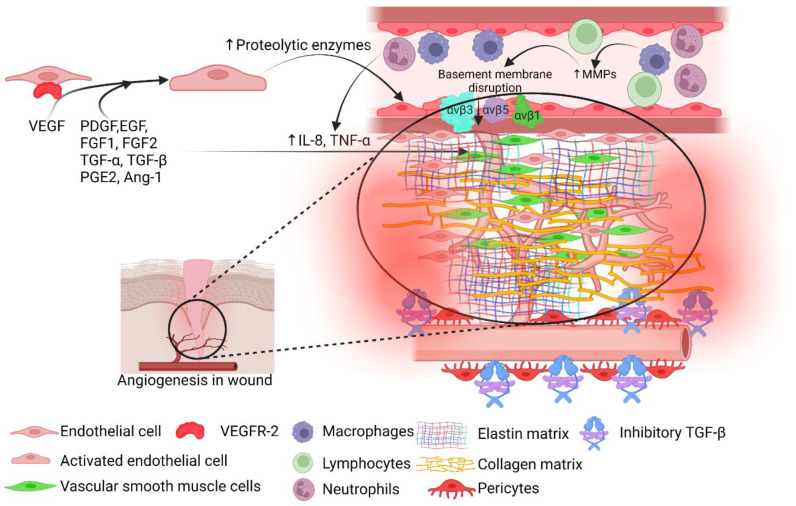Figure 1.
Angiogenesis in wound healing. Vascular endothelial growth factor (VEGF) secreted from fibroblasts in the wound environment activates endothelial cells (ECs) leading to increased secretion of proteolytic proteins. Increased matrix metalloproteinases (MMPs) from macrophages and proteolytic enzymes facilitate the disruption of the basement membrane, migration of ECs, and sprouting of the new vessels into the wound. This process is facilitated by increased expression of adhesion proteins (VCAM-1) and integrin receptors (αvβ 1, αvβ 3, and αvβ 5) and mediators of angiogenesis such as platelet-derived growth factor (PDGF), epidermal growth factor (EGF), fibroblasts growth factor (FGF), transforming growth factor (TGF)-α and β, prostaglandin E2 (PGE2), angiotensin (Ang)-1, interleukin (IL)-8, and tumor necrosis factor (TNF)- α. Increased recruitment of vascular smooth muscle cells (VSMCs) and pericytes facilitate neo-angiogenesis and vasculogenesis. Once vessels are formed and wound healing enters the later phase of healing angiogenesis is suppressed by the inhibitory form of TGF-β and increased secretion of endostatin (collagen XVIII).

